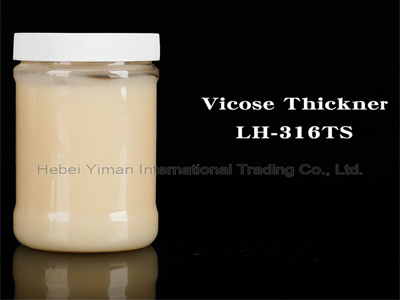Disperse dyes are prone to problems such as uneven dyeing, recrystallization, agglomeration and coking. How to prevent them? Disperse Dyeing Supplier will introduce you about it.
1. Uneven Dyeing
The uniformity of dye absorption is related to the ratio between the dye liquor flow rate and the absorbance. In the color absorption stage, the direction of the liquid flow is changed every 8 cycles. Decreasing the bath ratio from 1:12 to 1:6 can change the uniformity of the migration stage, although the degree of unevenness at the beginning of the dyeing is more obvious. When mixing and dyeing, it is not enough to select dyes with similar diffusion properties to ensure level dyeing.
At this time, the mixing ratio plays an important role. If the amount of three dyes used in color matching is the same, it is correct to use dyes with the same diffusion properties. However, if the proportion of two dyes is larger, the diffusibility of the third dye should be lower, otherwise it will be exhausted faster than the other two dyes, which will easily cause uneven dyeing.
2. Recrystallization
Disperse Dyeing often recrystallize particles larger than 1nm due to repeated heating and cooling. Adding additional dispersants can minimize recrystallization. During dyeing, when the dyeing bath is cooled from 130°C to 90°C, some dyes are often easy to recrystallize, resulting in poor rubbing fastness of the dyed product, and even clogging the filter in the high temperature and high pressure dyeing machine.

Preventive Measures
Keep 100℃ for a long time, the dye is easy to agglomerate, adjust the heating speed from 100℃ to 130℃;
If the dye in the dye bath recrystallizes after reaching the dyeing balance, more dispersant must be added;
Some red disperse dyes are prone to recrystallization at the end of dyeing, even if their concentration is much lower than the saturation level, especially when dyeing darker colors. Especially when dyeing with hard water, it is easy to chelate with metal ions. The resulting chelate has poor solubility under dyeing conditions and will leave blue spots or color streaks on the fabric.
The factors that cause recrystallization
Auxiliaries, winding oil, alkaline residues, etc. added during spinning. These problems can be avoided by refining before dyeing or adding chelating agents in the dye bath. Once the stain occurs, it can be eliminated by alkaline reduction cleaning or acid treatment.
3. Agglomeration and Focus
The contributing factors
It weakens the dissolving effect of the dispersant, reduces the electrostatic repulsion, and increases the collision rate of the dye particles and improves their kinetic energy. Generally, the higher the dyeing concentration and temperature, and the longer the dyeing time, the greater the possibility of agglomeration and coke. Dyeing auxiliaries such as carriers and levelling agents can easily replace the dispersant blended in the dye, thereby reducing dispersion stability.
Measures to improve stability during dyeing
Disperse the dye at 40°C and use a concentrated dispersion;
The best temperature control when the dye liquor is heated;
Using dispersant with protective colloidal effect;
Do not use additives with cloud point at high temperature;
Wash off all dyes and yarn auxiliaries including emulsifiers before dyeing;
During high temperature dyeing, no carrier and non-ionic levelling agent should be added before most of the dyes have been dyed on the fabric;
No salt, only acetic acid to adjust the PH value;
Yarn or piece-dyed fabrics should be properly pre-shaped, and laboratory tests should be done to ensure the dispersion stability of disperse dyes.
Post time: Nov-19-2020

